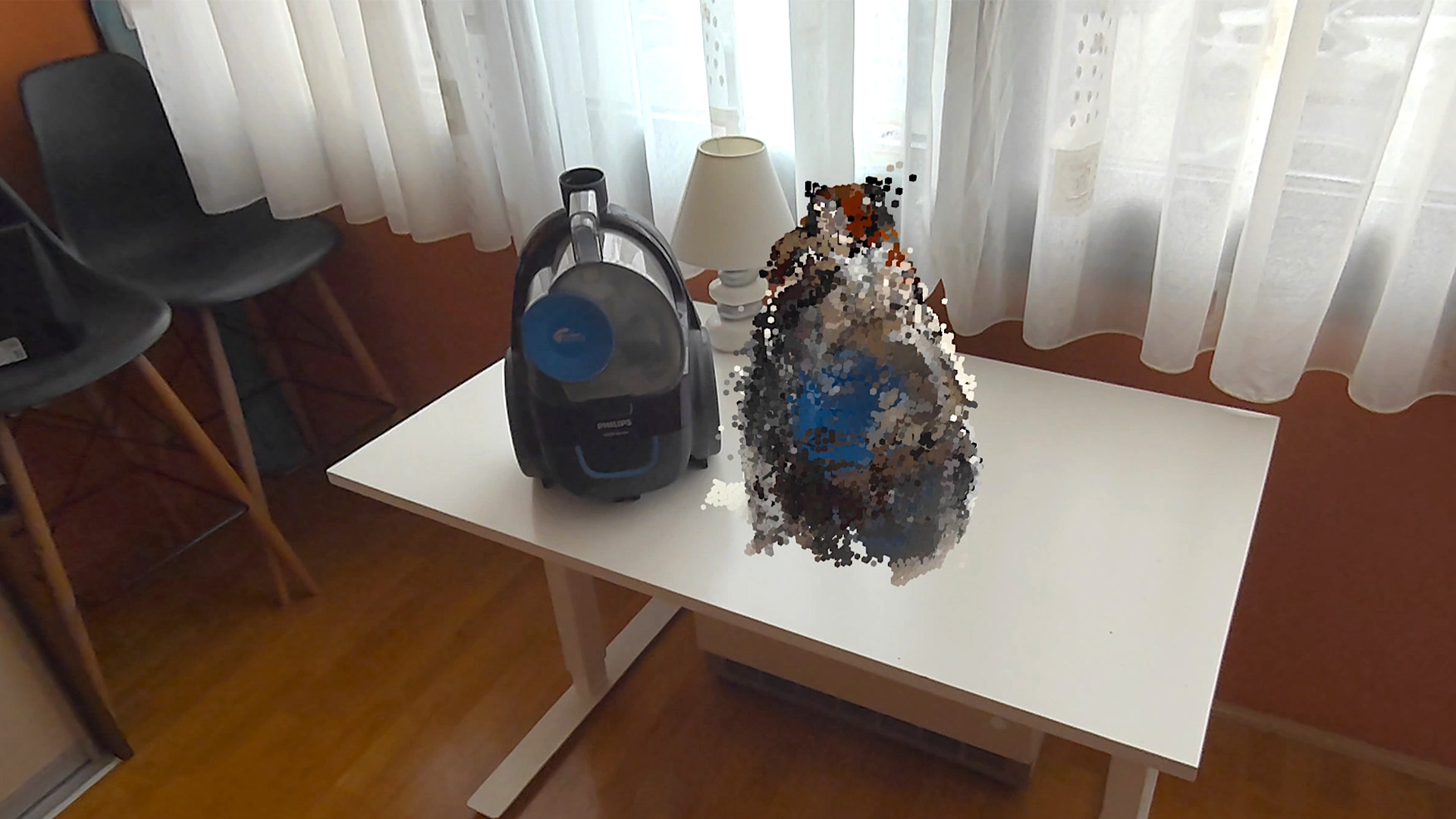Monthly Archives: March 2025
California Has 48% More EV Chargers Than Gas Nozzles
California has 11.3% of America’s population — but bought 30% of America’s new zero-emission vehicles. That’s according to figures from the California Air Resources Board, which also reports 1 in 4 Californians have chosen a zero-emission car over a gas-powered one… for the last two years in a row.
But what about chargers? It turns out that California now has 48% more public and “shared” private EV chargers than the number of gasoline nozzles. (California has 178,000 public and “shared” private EV chargers, versus about 120,000 gas nozzles.) And beyond that public network, there’s more than 700,000 Level 2 chargers installed in single-family California homes, according to the California Energy Commission.
Of the 178,000 public/”shared” private chargers, “Over 162,000 are Level 2 chargers,” according to an announcement from the governor’s office, while nearly 17,000 are fast chargers. (A chart shows a 41% jump in 2024 — though the EV news site Electrek notes that of the 73,537 chargers added in 2024, nearly 38,000 are newly installed, while the other 35,554 were already plugged in before 2024 but just recently identified.)
California approved a $1.4 billion investment plan in December to expand zero-emission transportation infrastructure. The plan funds projects like the Fast Charge California Project, which has earmarked $55 million of funding to install DC fast chargers at businesses and publicly accessible locations.
Read more of this story at Slashdot.
Firefox 137 Release Brings VA-API Accelerated H.265 On Linux
The Mozilla Firefox 137 release binaries are now available ahead of the official release set for Tuesday…
Overblown quantum dot conspiracy theories make important points about QLED TVs
QLED TV manufacturers have dug themselves into a hole.
After years of companies promising that their quantum dot light-emitting diode TVs use quantum dots (QDs) to boost color, some industry watchers and consumers have recently started questioning whether QLED TVs use QDs at all. Lawsuits have been filed, accusing companies like TCL of using misleading language about whether their QLED TVs actually use QDs.
In this article, we’ll break down why new conspiracy theories about QLED TVs are probably overblown. We’ll also explore why misleading marketing from TV brands is responsible for customer doubt and how it all sets a bad precedent for the future of high-end displays, including OLED TVs and monitors.
CachyOS March 2025 Release Brings Limine Bootloader
Arch-based CachyOS’s March 2025 update adds the Limine bootloader, btrfs snapshots, ASUS Armoury support, and better NVIDIA GSP firmware.
Linux 6.15 Introduces SPI Offloading, Converts More Drivers To The Faux Bus
Greg Kroah-Hartman on Sunday submitted all of the “char/misc” patches for the Linux 6.15 merge window for this random catch-all area of the kernel with small drivers and other random/obscure hardware support…
PostgreSQL Lands Batch Mode & Other Async I/O Improvements
Last week PostgreSQL merged support for IO_uring that can provide for “considerably faster” performance of this popular open-source database server. Over the weekend some additional improvements were merged to the asynchronous I/O “AIO” code to PostgreSQL, including introducing a new batch mode that can also provide a performance win…
Intel-Started Cloud Hypervisor Project Adds Experimental RISC-V Support
Cloud Hypervisor began as an open-source Intel software project more than a half-decade ago with an emphasis on security and cloud deployments while leveraging the Rust programming language. With time its scope has broadened a lot as has its industry adoption. With time it added ARM64 support and recruited AMD, Ampere Computing, Microsoft, and others as its supporters while being folded into the Linux Foundation. The latest expansion for the project is introducing experimental RISC-V 64-bit support…
VR Shooting Sim ‘ACE’ Partners with Major Gun Manufacturer for More Realistic Training


Ace Virtual Shooting, the studio behind shooting simulator Ace (2023), announced it’s partnering with Swiss firearms manufacturer SIG SAUER to release a Meta Touch controller peripheral that replicates the weight and feel of a real SIG pistol.
Ace and Sig Sauer are releasing licensed replicas of two 9mm handguns, the Sig P320 X-Five Legion and P365 X-Macro Comp, which clip into Quest’s right Touch controller and are meant to be used with the studio’s subscription-based Quest app, Ace.
Supporting Quest 2 and above, and priced at $19 per-month ($14 when billed annually), Ace lets users go through a host of real-world shooting exercises and courses, letting you track training, compete against other players, and review real-time analytics of speed, accuracy, and precision.
This also now includes the a virtual version of the SHOOT SIG competition series as well as in-game models that match up with the real-world Sig pistols, including optics such as SIG ROMEO3MAX red dot.
Notably, all of Ace’s officially licensed Touch peripherals—including Staccato HD P4 and Staccato P 2011—are designed to replicate the frame, weight, and trigger of their real-world counterparts, aiming to appeal to first responders, competitive shooters and hobbyists alike.
“The realism of the Ace Virtual Shooting environment is unlike anything I’ve ever experienced,” says Max Michel, Team SIG Captain & World Champion Professional Shooter. “It’s incredibly fun and parallels the live fire drills I shoot with my SIG P320MAX when I am training.”
While pricey for a VR controller peripheral at $199, Ace’s replicas are actually cheaper than 1,000 rounds of the sort of manufactured 9mm ammo you might use over the course of a few range days, according to price data from Midway.com.
You can find all of Ace’s replicas, including those from SIG SAUER and Staccato, over on the studio’s website, which also includes headset bundles and more info on Ace’s subscription.
The post VR Shooting Sim ‘ACE’ Partners with Major Gun Manufacturer for More Realistic Training appeared first on Road to VR.
Linux 6.15 Wires Up SoundWire Bulk Register Access
The in-development Linux 6.15 kernel is continuing to enhance its support for MIPI’s SoundWire specification for small audio peripherals with this two-pin, low-complexity audio interface…
Using Meta Quest 3 as a 3D scanner – is it possible?

The experimental MR app Digitalizer promises easy real-object scanning with Quest 3, but underperforms in practice.
The post Using Meta Quest 3 as a 3D scanner – is it possible? appeared first on MIXED Reality News.
Squid Game: VR experience gets major season 2 update

Sandbox VR has expanded its Netflix project “Squid Game Virtuals” with a new mini-game called “Repeat Racers”.
The post Squid Game: VR experience gets major season 2 update appeared first on MIXED Reality News.
RoboCop VR game disappears: Amazon MGM claims there is no licensing agreement

The VR game RoboCop: Streets of Anarchy will not be released. According to rights holder Amazon MGM, the game was never officially licensed.
The post RoboCop VR game disappears: Amazon MGM claims there is no licensing agreement appeared first on MIXED Reality News.
HTTPS Certificate Industry Adopts New Security Requirements
The Certification Authority/Browser Forum “is a cross-industry group that works together to develop minimum requirements for TLS certificates,” writes Google’s Security blog. And earlier this month two proposals from Google’s forward-looking roadmap “became required practices in the CA/Browser Forum Baseline Requirements,” improving the security and agility of TLS connections…
Multi-Perspective Issuance Corroboration
Before issuing a certificate to a website, a Certification Authority (CA) must verify the requestor legitimately controls the domain whose name will be represented in the certificate. This process is referred to as “domain control validation” and there are several well-defined methods that can be used. For example, a CA can specify a random value to be placed on a website, and then perform a check to verify the value’s presence has been published by the certificate requestor.
Despite the existing domain control validation requirements defined by the CA/Browser Forum, peer-reviewed research authored by the Center for Information Technology Policy of Princeton University and others highlighted the risk of Border Gateway Protocol (BGP) attacks and prefix-hijacking resulting in fraudulently issued certificates. This risk was not merely theoretical, as it was demonstrated that attackers successfully exploited this vulnerability on numerous occasions, with just one of these attacks resulting in approximately $2 million dollars of direct losses.
The Chrome Root Program led a work team of ecosystem participants, which culminated in a CA/Browser Forum Ballot to require adoption of MPIC via Ballot SC-067. The ballot received unanimous support from organizations who participated in voting. Beginning March 15, 2025, CAs issuing publicly-trusted certificates must now rely on MPIC as part of their certificate issuance process. Some of these CAs are relying on the Open MPIC Project to ensure their implementations are robust and consistent with ecosystem expectations…
Linting
Linting refers to the automated process of analyzing X.509 certificates to detect and prevent errors, inconsistencies, and non-compliance with requirements and industry standards. Linting ensures certificates are well-formatted and include the necessary data for their intended use, such as website authentication. Linting can expose the use of weak or obsolete cryptographic algorithms and other known insecure practices, improving overall security… The ballot received unanimous support from organizations who participated in voting. Beginning March 15, 2025, CAs issuing publicly-trusted certificates must now rely on linting as part of their certificate issuance process.
Linting also improves interoperability, according to the blog post, and helps reduce the risk of non-compliance with standards that can result in certificates being “mis-issued”.
And coming up, weak domain control validation methods (currently permitted by the CA/Browser Forum TLS Baseline Requirements) will be prohibited beginning July 15, 2025.
“Looking forward, we’re excited to explore a reimagined Web PKI and Chrome Root Program with even stronger security assurances for the web as we navigate the transition to post-quantum cryptography.”
Read more of this story at Slashdot.
Arch Linux Installer Archinstall 3.0.3 Improves Limine Bootloader Support
Archinstall, the menu-based installer for the Arch Linux distribution, has been updated today to version 3.0.3, the third maintenance update in the Archinstall 3.0 series, bringing numerous improvements and bug fixes.
Linus Torvalds Gently Criticizes Build-Slowing Testing Code Left in Linux 6.15-rc1
“The big set of open-source graphics driver updates for Linux 6.15 have been merged,” writes Phoronix, “but Linux creator Linus Torvalds isn’t particularly happy with the pull request.”
The new “hdrtest” code is for the Intel Xe kernel driver and is around trying to help ensure the Direct Rendering Manager header files are self-contained and pass kernel-doc tests — basic maintenance checks on the included DRM header files to ensure they are all in good shape.
But Torvalds accused the code of not only slowing down the full-kernel builds, but also leaving behind “random” files for dependencies “that then make the source tree nasty,” reports Tom’s Hardware:
While Torvalds was disturbed by the code that was impacting the latest Linux kernel, beginning his post with a “Grr,” he remained precise in his objections to it. “I did the pull, resolved the (trivial) conflicts, but I notice that this ended up containing the disgusting ‘hdrtest’ crap that (a) slows down the build because it’s done for a regular allmodconfig build rather than be some simple thing that you guys can run as needed (b) also leaves random ‘hdrtest’ turds around in the include directories,” he wrote.
Torvalds went on to state that he had previously complained about this issue, and inquired why the hdr testing is being done as a regular part of the build. Moreover, he highlighted that the resulting ‘turds’ were breaking filename completion. Torvalds underlined this point — and his disgust — by stating, “this thing needs to *die*.” In a shot of advice to fellow Linux developers, Torvalds said, “If you want to do that hdrtest thing, do it as part of your *own* checks. Don’t make everybody else see that disgusting thing….”
He then noted that he had decided to mark hdrtest as broken for now, to prevent its inclusion in regular builds.
As of Saturday, all of the DRM-Next code had made it into Linux 6.15 Git, notes Phoronix. “But Linus Torvalds is expecting all this ‘hdrtest’ mess to be cleaned up.”
Read more of this story at Slashdot.
A Beginners Guide To Flatpak
This comprehensive tutorial explains what is Flatpak, how to install Flatpak on Linux and then how to use Flatpak command line user interface to install flatpak applications in Linux.
Linuxiac Weekly Wrap-Up: Week 13 (Mar 24 – 30, 2025)
Catch up on the latest Linux news: Kernel 6.14, Ubuntu 25.04 Beta, CachyOS March 2025 ISO, KaOS 2025.03, Zorin OS 17.3, is there Linux for Windows users, and more.
As Microsoft Turns 50, Four Employees Remember Its Early Days
“Microsoft built things. It broke things.”
That’s how the Seattle Times kicks off a series of articles celebrating Microsoft’s 50th anniversary — adding that Microsoft also gave some people “a lucrative retirement early in their lives, and their own stories to tell.”
What did they remember from Microsoft’s earliest days?
Scott Oki joined Microsoft as employee no. 121. The company was small; Gates was hands-on, and hard to please. “One of his favorite phrases was ‘that’s the stupidest thing I’ve ever heard,'” Oki says. “He didn’t use that on me, so I feel pretty good about that.”
Another, kinder phrase that pops to Oki’s mind when discussing the international division he founded at Microsoft is “bringing home the bacon.” An obsession with rapid revenue growth permeated Microsoft in those early days. Oki was about three weeks into the job as marketing manager when he presented a global expansion plan to Gates. “Had I done business internationally before? No,” Oki said. “Do I speak a language other than English? No.” But Gates gave Oki a $1 million budget to found the international division and sell Microsoft products overseas.
He established subsidiaries in the most important markets at the time: Japan, United Kingdom, Germany and France. And, because he had a few bucks left over, Australia. “Of the initial subsidiaries we started, every single one of them was profitable in its first year,” he says…
Oki left Microsoft on March 1, 1992, 10 years to the day after he was hired.
Other memories shared by early Microsoft employees:
One recent graudate remembered her parents in Spokane saying “I think that’s Mary and Bill Gates’ son’s company. If that kid is anything like those two, that is going to be a great company,'” She got her first job at Microsoft in 1992 — and 33 years later, she’s a senior director at Microsoft Philanthropies.
The Times also interviewed one of Microsoft’s first lawyers, who remembers that “The day the U.S. government sued Microsoft … that was a tough day for me. It kind of turned my world upside down for about the next eight years.”
Microsoft senior VP Brad Chase remembers negotiating with the Rolling Stones for the rights to their song “Start Me Up” for the Windows 95 ad campaign. (“Chase is quick to dispel any rumor that Mick Jagger called up Bill Gates and got $12 million. But he won’t say how much the company paid.”)
But Chase does tell the Times that Bill Gates “used to say all of the time, ‘We’re going to bet the company on Windows.’ That was a huge bet because Windows, frankly, was a lousy product in its early days.”
Read more of this story at Slashdot.
Copilot Can’t Beat a 2013 ‘TouchDevelop’ Code Generation Demo for Windows Phone
What happens when you ask Copilot to “write a program that can be run on an iPhone 16 to select 15 random photos from the phone, tint them to random colors, and display the photos on the phone”?
That’s what TouchDevelop did for the long-discontinued Windows Phone in a 2013 Microsoft Research ‘SmartSynth’ natural language code generation demo. (“Write scripts by tapping on the screen.”)
Long-time Slashdot reader theodp reports on what happens when, 14 years later, you pose the same question to Copilot:
“You’ll get lots of code and caveats from Copilot, but nothing that you can execute as is. (Compare that to the functioning 10 lines of code TouchDevelop program). It’s a good reminder that just because GenAI can generate code, it doesn’t necessarily mean it will generate the least amount of code, the most understandable or appropriate code for the requestor, or code that runs unchanged and produces the desired results.
theodp also reminds us that TouchDevelop “was (like BASIC) abandoned by Microsoft…”
Interestingly, a Microsoft Research video from CS Education Week 2011 shows enthusiastic Washington high school students participating in an hour-long TouchDevelop coding lesson and demonstrating the apps they created that tapped into music, photos, the Internet, and yes, even their phone’s functionality. This shows how lacking iPhone and Android still are today as far as easy programmability-for-the-masses goes. (When asked, Copilot replied that Apple’s Shortcuts app wasn’t up to the task).
Read more of this story at Slashdot.
